Several breeds, some now extinct, have been given credit for creation of the Vizsla, despite precious little accurate information from Europe over the ages as to the true origins of the Vizsla. Some have believed the St Hubertus Hound provided the Vizsla’s wonderful nose while other Hungarians have vehemently scorned the St Hubertus Hound’s interaction. Others have considered the Pannonian Hound, the Balkan Hound, the Buck Hound, Hungarian Agar (Greyhound), Turkish Hound, Lemgo Pointer, Hertha Pointer and Balkan Pointer made worthy contributions, while others have given credit to continental Pointing breeds like the German Shorthaired Pointer and/or the Weimaraner helping to create the Vizsla. In one old breed Standard, the Vizsla is labeled as a “man-sided greyhound.” The most creditable historical recounting belongs to Count Bela Hadik who claims that from the beginning Hounds were divided into two groups, one who pointed, one who didn’t. At that time hunting supporters began to specialize between large and small game.
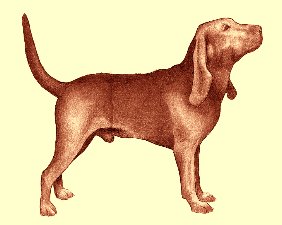
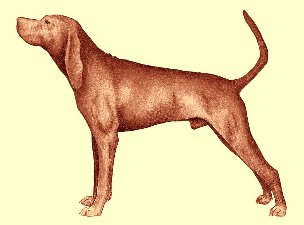
St Hubertus Hound Pannanonian Hound
Both breeds are now extinct but in their heyday were the formation of almost all of the hunting types that became hunting dogs across Europe. The above graphics are deliberately in the historical red color because yellow/red/brown has been established as the original color of those first & present dog breeds in Europe.
There are several different renditions of Vizsla origination. Count Bela Hadik and the Czechs & Slovaks would like Czechoslovakia to be the general area of breed birth, with the breed more resembling the above breed type examples.
The most logical answer of when the Vizsla became a breed, besides “yellow” being the birth-color of European dog breeds, comes from creation of the puzsta (man-made) during Turkish occupation in the fifteen/sixteen hundreds and the Turkish Hound bringing in the most traits that differ the Vizsla from the other continental sporting breeds, according to Count Bela Hadik. It is a proud Magyar claim that despite the consistent crossbreeding that has happened through the ages in stages to present day in Europe and the US, the Vizsla still remains true to its ancient breed type going backwards a thousand years.
East European Pointing Breed Hungarian Agar
Mihalyi Kende & Jeno Dus have more of a tendency to support the Great Plains
of Hungary theory of Vizsla breed birth with Kende adding a large amount of
Hound in the mix. Jeno Dus' theory more supports the Turkish input which
has already been established in every historical rendition so far.
In this theory the Pointing Hounds were crossed with the Hungarian Agar.
What is more likely is that all theories are correct.
They just have to be combined.
"The more things change, the more they stay the same."
Breeding is done the same, the world over. Vizsla owners breed what they have, believing they have the best & breed those dogs to dogs that best fit a Standard
or a "standard". It is simply the then current priorities that play into
whether specialized breeding is that "specialized".
Romanticists like to believe the Vizsla is over a thousand years and cite historical references to the word “vizsla” at a time when dog breeds didn’t exist per se, and breed types did. There is also a village called “vizsla”. Linguists have indicated the hamlet was named not for a dog breed, but as a name of peoples (seekers) and the word “vizsla” later evolved into meaning “bird dog breeds”, leaving us with Hungarian Vizslas, German Vizslas, Balkan Vizslas. Pragmatists consider the Vizsla’s self-color had no justification as a hunting breed until creation of the golden puzsta (plains) during Turkish reign giving rise to a need for “yellow” (translation issue) camouflage. While the Vizsla was originally designed to be a versatile feather and fur hunter; after Turkish occupation, the breed was intended to specialize in hunting, pointing and retrieving of feathered game.
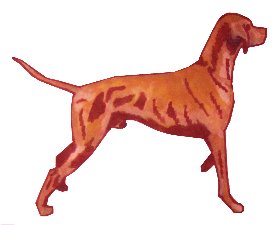
While the Vizsla is similar in type, silhouette and versatility to other Continental pointing breeds, they are still “different”. From whence comes the rounded loin? From whence comes compact webbed cat feet sneaking through historical fog? From whence comes the tailset below rounded loin? From whence comes that Vizsla velcro temperament? From whence comes that self-colored golden-rust color? From whence comes that, oh so soft and richly pliable ear leathers ? From whence comes that unending desire to please and adjust to owner’s delight in century, activity and country ?
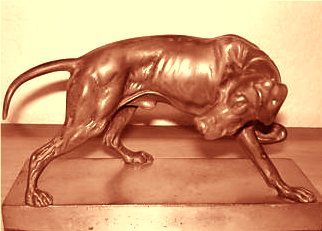
Crossbreeding of its very own nature has not been consistent per se, but is a fad that goes in stages for differing applicable reasons for the perceived needs of those times. During the modern re-creation during the 1920’s, the color of the Vizsla was too light, due to being crossed in abundance, it was believed with the English Pointer. If crossbreeding occurred during this recreation, it most likely was done with Irish Setters, red Kopos and German Vizslas who had no to little white with the intent of enhancing the rust color. Any crossbreeding done was more likely to be done in the State Kennel in Godollo by breed experts, all who later claimed NO crossbreeding took place. Louise Petrie Hay wondered why Hungarians were so against the LongHaired Vizslas or the longhair gene, which exists in GSP and Weimaraners. What Hay speculated, can be attributed to the long-hair gene being proof of crossbreeding, something the Hungarians denied vehemently. The mood of the Hungarians during this time, was outrage at losing the purebred rust colored Vizslas. They were furious with the world for taking their kingdom. The Hungarians inside and now outside Hungary, focused their fury on recomposing their national treasure, the Vizsla.
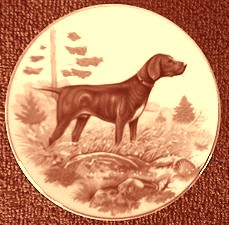
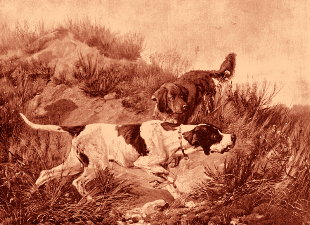
A Balkan or German Vizsla Pointer & Setter
May 29, 1920 saw the true birth of the Hungarian Vizsla; just a mere six days previous to the signing of The Treaty of Trianon that gave away so much of Hungarian lands and left an area, called Hungary, the size of Indiana. In fact, the abominations of WWI and its Treaty and dumping Hungarians outside Hungary; resulting in so much harm to Hungary, actually saved the breed from extinction. This boundary re-construction gave rise to great Hungarian national pride, which manifested itself in dog-stock breeding and most importantly establishment of multiple State/Country studbooks. Due to the Orszagos studbooks being lost and original pedigrees/paperwork, the Czech five generation studbooks became the documented salvation of the WWII Vizsla.
German or Balkan Vizsla
In 1880 Zoltan Hamvay, Hungarian dog breeder, introduced the English Pointer for crossbreeding to Hungary and another hunter Julius Barczy de Barczihaza began crossbreeding the Vizsla with the Irish or Red Setters. Due to the then taste for foreign things, the purebred Vizsla became so rare that in November of 1916, a short piece, asking for all purebred Vizslas to report, appeared in the NIMROD publication.
By May 1920, only a dozen or so purebred Vizslas could be found for the Foundation stock, a task made doubly hard by the country being in/recovering from war. Two studbooks were formed, an “A” and a “B” with the believed purebred stock going into the “A” studbook and the part-bred stock with Vizsla traits going into the “B” studbook. According to Hungarian sources, only examined and approved individuals registered in both studbooks were used for breeding.
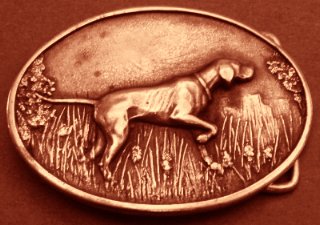
Ironically in 1920 the two persons, Hamvay and Barczy, most responsible for the crossbreeding dilemma, also had initial possession of the studbooks. Individuals to be registered were examined by three breed wardens. Pedigrees were the official Kennel Club paperwork and were officially issued in 1923 from the temporary pedigrees started in 1917. Planned breedings and resulting litters were approved by three breed wardens for conformation, vizsla traits and hunting ability. Only six individuals per litter were permitted to live, with few exceptions. Tails were docked at one day of age. The State kennel was in Godollo and the State took one or two Vizslas from every litter. White was deliberately tried to be bred out and the first breed Standard clearly stated this desire for breeders. The studbook was closed in 1936 and all modern day Vizslas in the world stem on all tails of their pedigree from this studbook (1920-1936).
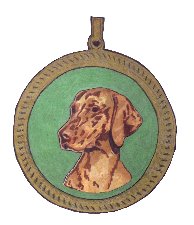
While many Hungarians did not hesitate to step forward, Koloman Polgar worked tirelessly to save the Vizsla from extinction, virtually at the last hour. It was May 29, 1920 when Polgar, the attorney, helped to found the Hungarian Breeders’ Association at Kaposvar, Hungary. The first officers were George Sarkozy, president; Louis Kaskovics and Dr Adalbert Tevely, vice-presidents; Dr Koloman Polgar, manager; John Sass, secretary; and Elmer Petocz, treasurer. In 1920 the Hungarian Breeders Association drew up the first Standard. The Standard was then revised and the changed Standard not adopted until 1943. 1924 saw the birth of the Orszagos Vizsla Club (OVC). The Hungarian spirit had been decimated by the Germans and the loss of their men in WWI. Their lands were preparing to leave an age old kingdom that had numerous times been occupied by others through war. What an egregious error of the world to once again under-estimate the national pride of the Magyars.
Historical Hungarian Flags
While the Treaty of Trianon took away valuable land, the one thing it accomplished was the creation of multiple State Kennel Clubs, which in turn insured several of the studbooks ended up surviving WWII, with the Hungarian studbook buried, lost forever to never be found according to American sources to burnt in a fire from Europe.
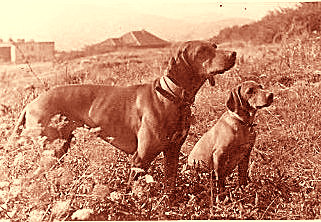
Historically the Vizsla had generally been owned and bred by the aristocracy; was never great in numbers, reaching a then zenith for remaining Hungary and Orszagos Vizsla Club of registering approximately 1,300 Vizslas between May 29, 1920 and 1941. It was during the 1800’s, the term “gentleman hunter” had its birth, a quality lauded to the Vizsla from modern Magyars. What that term actually means is that the educated or aristocracy were the peoples who bred/used Vizslas. All Vizslas that were bred, also hunted. It still holds true with the educated, ergo the “gentlemen” are the median line of today’s Vizsla enthusiasts who breed. One should note that with the 1920 Vizsla re-creation of the titles of the educated people doing the breeding of Vizsla hunting dogs. The same educated peoples control today’s Vizsla breeding programs, unfortunately the majority of those breeders do not hunt game of any kind.
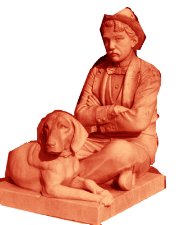
There are several accountings of the Hungarian Vizsla 1920’s foundation stock, which was composed of Ch Ripp II, donated to the Club by General Mesterhazy; Kati I owned by Koloman Polgar; Witti owned by Popovits and sire of Vegvari Betyar and Treff; Rupp, possessor of wire face; Treff owned by Mr Vicenti; Ficko, owned by Dr Stephen Nemes; Honved, owned by the hunting paper NIMROD; Pritt owned by Koloman Darnay; Laura, owned by Franc Kacza from Mosdos; Rica owned by Daniel Halka who was a forester from Homok, Stanci, owned by John Sass from Kaposvar; Ara, belonging to Adalbert Blaskovich from Tapioszele; Donna, belonging to Stephen Remenyik in Heves; Kaposi Maresa owned by Szentgyorgyi; Joli, Csore, Kati II owned by Joszeph Stiffitt (Say) and Miss (liver bitch) owned by Dr Ernest Kunzl.
Hevizi Kennels 1941 and Hevizi Lurko
Both photos from The Hunt Collection
After setting up the studbooks, the Hungarian Breeders Association began having field trials in 1920 in Kaposfured. Taking part in that first field trial was Stanci 10 years old; Rica 12 years old; Rupp (Felo-Stanci) 2 years; Marcsa (Lurko-Rica) ; Frici (Honved-Laura) 3 years; Lidi (Treff-Borszorkany) 2 years; Kati ( Treff-Borszorkany) 2 years; . Results were Kati in first place with 158 points; Lidi in second with 154 points and Stanci with 151 points. As with its US cousin (their first field trial in 1955) this field trial also had a large gallery. One of its spectators Daniel Halka wrote an article in NIMROD, titled “ How I became Paul from Saul”.
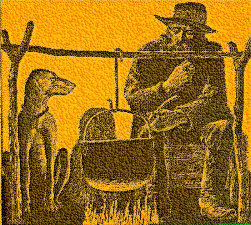
Other credit must be given to Tibor Thuroczy, who was the chief registrar for the NIMROD magazine, who gambled on the Hungarian hunters to save the “yellow pointer” in 1916 from extinction; Dr Desider Patoczky who in 1917 created a temporary pedigree; Koloman Kittenberger, African hunter and proprietor of NIMROD, owner of Szikra and Szidi; Captain Carol Baba who was owner of Vegvari Betyar. Vegvari Betyar won first place in several of the twenties field trials; Professor Balazs Ostvos published a book that contained the new Standard and pedigree items; Dr Elemer Markos, veterinarian and judge; Ladislov Gresnarik started the Selle line in 1923 and was also prominent with developing the Wirehair Vizsla. Credit in particular must be given to the Orszagos Vizsla Club (OVC), formed in 1924.
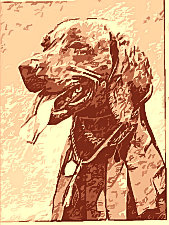
It has been said many times the Vizsla’s past has been affected by war. While that statement is true, it isn’t completely accurate. The Vizsla’s past has been affected by national pride and the phoenix always rising from the ashes to soar once again.
While the ancient ancestors and even modern day Vizsla Foundation stock can never be truly ascertained, there is no denial to its birth or flowers bearing fruit in May of 1920, was destined to be the true birth of the Magyar golden pointer. Next May, when spring cycles once again and we inhale the pungent fragrance of nearby Hungarian lilacs; don’t forget that other Magyar flower that still blossoms and blooms worldwide, the Vizsla.
This website composes the private and public collections & lifetime investments of Vizslak peoples around the world with an initial focus on the USA & the field because that is the information SITmUP has processed....so far. Please "respect" our collective work on thevizslaksentinel.com and do not use in an unexpected way. The individual collections form the cornerstones of every Vizsla living and owned by "you" today. If respected by the readers, the information on this website will remain & grow.
Credit should be given by providing the appropriate Sentinel URL
when quotes or articles are republished.
"The Vizslak Sentinel " (c) Jan 13, 2009
Product of Stuck In The mud Underground Publishing (SITmUP)